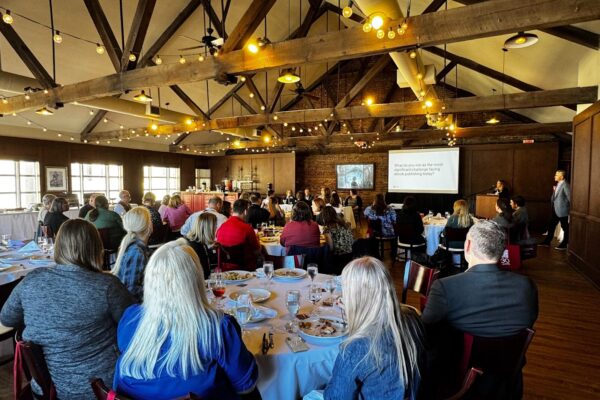Artstor is introducing curriculum guides–collections of images from the Artstor Digital Library based on syllabi for college courses–compiled by faculty members and experts around the country. Learn more here.

Colonial Latin America curriculum guide
Rachel Moore, Associate Professor, History, Clemson University
This curriculum guide explores a wide range of perspectives on the colonial period in Latin America. This includes encounters of the Spanish and the Portuguese (as well as the Dutch) with indigenous populations in Mexico and South America. By analyzing these images alongside readings, the student will gain a fuller sense of the mindset of the participants in each historical event and, ultimately, a fuller sense of the historical event itself.
Section 1: The Age of Encounters: Impressions of the New World
Images for this selection address European impressions of the New World in the earliest years of the Spanish encounters with Latin America. Most of these images were produced by those who had no direct contact with Latin America and thus are both fantastical and reflective of pre-contact mindsets in Europe.
View the image group
Section 2: Iberian Precedents: The Legacy of Convivencia in Spain and Portugal
Images for this selection examine in detail the precedents for the conquest of the New World set by the Muslim occupation of the Spanish peninsula from 711-1492 and the subsequent Spanish reconquest of the peninsula. These images include reference to popular figures, such as Santiago Matamoros, and building styles that would appear in Spain and Latin America as a result of the convivencia.
View the image group
Section 3: Indian Conquistadors: Tribute Empires before the Age of Encounters
Images for this selection document how the Aztec and the Inka carried out conquest to expand their tributary empires before the arrival of the Europeans. These images, including maps and images of indigenous gods, feature references to differing conventions among the Aztec and the Inka and the differing effects these convention had on the coherence of their empires.
View the image group
Section 4: Conquest in Mexico and Peru
Images for this selection examine the range of interactions that occurred during the earliest years of the Spanish occupation of Latin America. In addition to several maps, the selection includes images of Hernan Cortés, the head conquistador in New Spain, and his translator and mistress Malinche, as well as Francisco Pizarro, the head conquistador in Peru, and his confrontation with Inka king Atahuallpa.
View the image group
Section 5: Father and mother of Latin America: the Habsburgs and the Church
Images for this selection emphasize the other aspect of the Spanish occupation of Latin America: “the spiritual conquest.” These images include depictions of the Franciscans in the New World as well as the close relationship between the Habsburg monarchs and the Catholic Church.
View the image group
Section 6: The fruits of conquest: Revenue makers and revenue takers
This smaller collection of images documents the labor and financial obligations that indigenous peoples faced during the Spanish occupation of Latin America. Images of the Andean city of Potosí emphasize the importance of silver to the Spanish economy during the conquest period.
View the image group
Section 7: Brazilian counterpoint: The Portuguese in the New World
Images for this collection reflect the distinct history of the Portuguese in Latin America. These images include maps documenting Portuguese settlement along the coasts of Brazil (as opposed to the Spanish settlement of the interior of their territories) as well as the experience of African slaves in Brazil.
View the image group
Section 8: The Baroque period in Latin America
Images for the selection capture some of the opulent decoration and vivid (sometimes brutal) detail that characterized Baroque art and architecture in Latin America. The images in this selection showcase the opportunities for the coexistence of indigenous and European conventions of art provided by the Baroque style. They also reflect the ways in which Europeans used Baroque art to embody the power of both the Spanish empire and the Catholic Church.
View the image group
Section 9: Decadence and diligence: from Habsburg to Bourbon rule
Images for this selection document the change of leadership in Spain from the Habsburg monarchy to the Bourbon monarchy. This small selection of images uses portraits of the royal families to explore how the Habsburg monarchy had fallen into decadence, whereas the Bourbon monarchy represents a move towards diligent monitoring of activities in Spain’s colonies.
View the image group
Section 10: Creole patriotism
Images for this selection turn to the prominent community of creoles – those of pure Spanish blood born in Latin America – in the New World. Images include examples of the intellectual contributions of the creole community as well as their detractors. The Aztec goddess Coatlicue is depicted in this selection as an example used by creoles to indicate the rich classical heritage of Latin America.
View the image group
Section 11: The Virgin of Guadalupe
Images for this selection examine both historical and contemporary depictions of the Virgin of Guadalupe. Early images reflect the appeal of the story of the apparition of the Virgin to indigenous communities in Mexico. Later images reflect the continuing appeal of the Virgin of Guadalupe as a national symbol.
View the image group
Section 12: Independence in Mexico
Images in this selection document the independence movement in Mexico, beginning with the Hidalgo Revolt in 1810 and ending with the crowning of Agustín de Iturbide as Emperor.
View the image group
Section 13: Independence in South America and Brazil
Images in this selection document the independence movement in South America and Brazil. Images include references to Simon Bolívar and Brazil’s distinct path to independence through a Portuguese monarch.
View the image group


